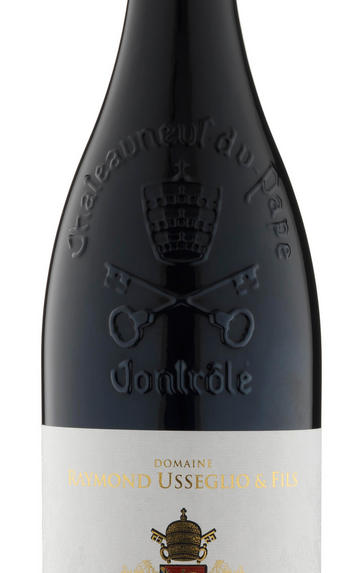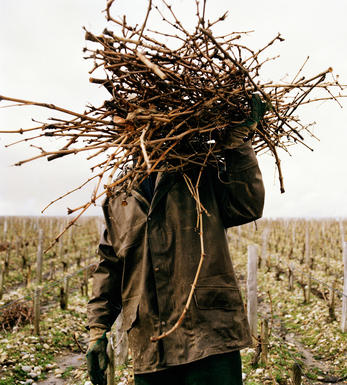
2011 Châteauneuf-du-Pape, Domaine Pierre Usseglio & Fils, Rhône

Critics reviews
An estate that continues to churn out outstanding wine after outstanding wine, regardless of the vintage, Domaine Pierre Usseglio is obviously in fine hands with brothers Jean-Pierre and Thierry Usseglio running the show. Covering roughly 55 acres in the appellation, they normally produce three Chateauneuf du Papes: a traditional made cuvee that’s roughly 75% Grenache and the rest Syrah, Mourvedre and Cinsault; a Grenache dominate Cuvee De Mon Aieul that’s aged in concrete tank; and their top Reserve des Deux Freres, which normally includes some Syrah and sees a small portion in new oak barrels. There was only one Chateauneuf du Pape produced in 2011, and no Reserve des Deux Freres in 2012.
Jeb Dunnuck - Wine Advocate #209, Oct 2013
Jancis Robinson MW, jancisrobinson.com – 28 Feb 2013
About this WINE

Domaine Pierre Usseglio
This first class domaine is now run by Pierre Usseglio's sons Jean-Pierre and Thierry. It has recently expanded with the purchase of seven hectares of vines that Jean-Pierre had previously worked en metayage. The vineyards are split into three separate plots of vineyards in the La Crau, Serres and Le Bedine subzones of Châteauneuf-du-Pape. The vineyards are old with an average age of 80 years and are planted with Grenache Blanc, Clairette, Bourboulenc and Roussanne.
The grapes from each of the three parcels are fermented separately in concrete cuves before being blended and then and aged for between 18-24 months in immaculately kept oak foudres.

Châteauneuf-du-Pape
The most celebrated village of the Southern Rhône, Châteauneuf-du-Pape is the birthplace of the now indispensable French Appellation d’Origine Contrôlée system – imperfect though it may be. Compared to the Northern Rhône, the vineyards here are relatively flat and often feature the iconic galet pebbles – the precise benefits of which are a source of much debate. Minimum alcohol levels required by the AOC are the highest in France, but at 12.5% it is well below the natural generosity of Grenache, which only achieves its full aromatic potential when it is fully ripe and laden with the resultant high sugars. Syrah and Mourvèdre contribute the other defining elements in the blend, adding pepper, savoury spice and structure to the decadent Grenache. There are a further 10 permitted red grape varieties which can be used to adjust the “seasoning”. Of the five white varieties permitted, it is Grenache Noir’s sibling – predictably perhaps – Grenache Blanc, which dominates, though Roussanne shows a great deal of promise when handled well, notably at Château de Beaucastel.

Southern Rhône Blend
The vast majority of wines from the Southern Rhône are blends. There are 5 main black varieties, although others are used and the most famous wine of the region, Châteauneuf du Pape, can be made from as many as 13 different varieties. Grenache is the most important grape in the southern Rhône - it contributes alcohol, warmth and gentle juicy fruit and is an ideal base wine in the blend. Plantings of Syrah in the southern Rhône have risen dramatically in the last decade and it is an increasingly important component in blends. It rarely attains the heights that it does in the North but adds colour, backbone, tannins and soft ripe fruit to the blend.
The much-maligned Carignan has been on the retreat recently but is still included in many blends - the best old vines can add colour, body and spicy fruits. Cinsault is also backtracking but, if yields are restricted, can produce moderately well-coloured wines adding pleasant-light fruit to red and rosé blends. Finally, Mourvèdre, a grape from Bandol on the Mediterranean coast, has recently become an increasingly significant component of Southern Rhône blends - it often struggles to ripen fully but can add acidity, ripe spicy berry fruits and hints of tobacco to blends.


Buying options
Add to wishlist
Description
With no Mon Aieul made in 2011, all the best fruit has gone into this classic cuvée, and a very fine effort it is too. The blend is 80% Grenache, 10% Syrah, 5% Cinsault, 5% Mourvèdre and ageing has been shared between cement and wood, that is to say tank and foudre. A superb and warming wine, with a herbal nose, what follows is a luxuriant palate with dark fruit and a savoury undercurrent.
Simon Field MW, BBR Buyer
We often buy the wine from Pierre Usseglio but do not always put it into our printed offer, for fear of engendering confusion. To have two domaines named Usseglio in the village is slightly surprising in itself, surreal even; the high quality of both makes it even more so. On reflection, it is logical however, as both branches are from the same Italian vinous scion and both were clearly very well taught. Brothers Thierry and Jean-Pierre’s domaine is in the shadows of the ruins of the pope’s castle but their 25 hectares are spread widely over the five communes and the wines are seldom far from the lime-light.
wine at a glance
Delivery and quality guarantee